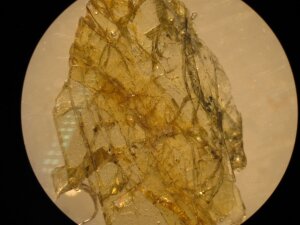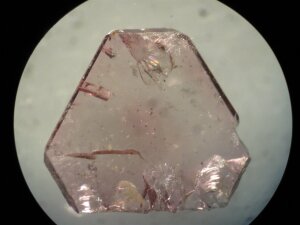Colors of Stardust
Olivin
Image: AIUIn young (and also older) planetary systems, solid particles are heated by absorption of stellar radiation, which is dominated by photons in the visible and near-infrared wavelength ranges. Temperatures of such particles have been determined from photometric and spectroscopic observations of protoplanetary disks around other stars. These temperatures are often in disagreement with the low absorption efficiencies of pure minerals at visible wavelengths which can be found in tables of optical constants of solids. Thus, we have started to measure spectral absorption coefficients of natural minerals containing impurities, such as olivines containing iron and spinel containing chromium and iron. The results are interpreted in terms of crystal-field transitions of the transition metal ions [1] as well as of vibrational transitions of other impurities determining the absorption properties.
Spinell
Image: AIUThis work has been supported by the DFG Priority Programme SPP 1385 "The first 10 million years of the solar system: a mineralogical approach". It is a collaboration with T. Posch and H. Richter from Institut für Astronomie der Universität Wien (Vienna).
[1] Burns, R.G. Mineralogical Applications of Crystal Field Theory“, 2nd Ed., Cambridge Univ. Press, 1993.
Publications: S. Zeidler, T. Posch, H. Mutschke, H. Richter, O.Werhan, 2011, Astron. Astrophys., 526, A68.

